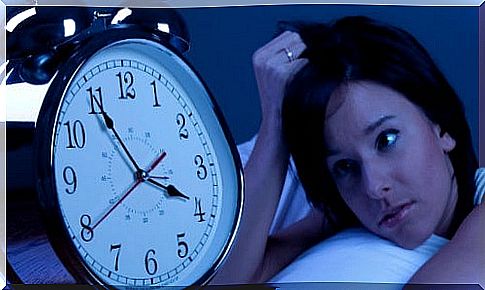Night Awakening – What Can I Do?
If you wake up regularly or very often at 3 or 4 am, it is a serious problem.

Many often wake up in the middle of the night and cannot fall asleep afterwards. This common sleep disorder is often caused by anxiety.
If you wake up at 3 or 4 a.m. regularly or very frequently, it is a serious problem that should be addressed. Then you will learn more about night awakening and the symptoms associated with it.
Night awakening and associated symptoms

There are many studies on this common sleep disorder. However, it is a completely normal phenomenon: the brain’s reaction to feelings of anxiety, which can occur sporadically or over long periods of time, can cause you to wake up between 3 and 4 a.m.
The following symptoms appear:
- As soon as the person concerned becomes awake, he feels great restlessness and discomfort.
- There is a rapid heartbeat and feelings of fear.
- It is impossible to fall asleep afterwards. This makes you even more nervous and negative thoughts prevent sleep.
- If you do manage to fall asleep, sleep is only superficial and you feel very tired the next morning.
- This phenomenon of waking up at night can recur about twice a week.
Anxiety and waking up at night
Why do I almost always wake up at around 3 a.m.?
If you often wake up early in the morning at the same time, the first thing to ask yourself is what might be causing this. Are you worried, do you feel threatened, are you overwhelmed at work or do you have emotional problems?
All of these factors lead to feelings of fear that are not always consciously noticeable. Often the brain reacts during the night and this leads to sleep disorders.
The accumulated tension causes you to wake up in the middle of the night with a threatening feeling.
- Anxiety directly affects the central nervous system, which triggers small biochemical and neurochemical changes that affect the wake-sleep cycle. This in turn leads to sleep disorders (in the REM phase and other phases of sleep).
- Often there are already problems falling asleep; those affected usually only manage to fall asleep at midnight. The fear causes sleep to become fragmented and it is difficult to get into the REM phase, which is when deeper, repairing sleep occurs. This fear is interpreted by the brain as a threat, which triggers the need to flee. Since you are constantly on the alert, you suddenly wake up a few hours after falling asleep, usually around 3 a.m.
- This is a normal reaction of the body to a state of anxiety; neurotransmitters cause these sleep disorders.
How can these sleep disorders be treated?

With this anxiety-induced sleep disorder, the root causes must first be resolved: the stress, problems, or emotional turmoil that are causing the anxiety must be managed.
- It is important to first recognize that something is not working. Nocturnal awakening with feelings of fear or threat indicates that something is wrong. Try to find out exactly what is causing this, what is making you unhappy or threatening you.
- Make small changes in your life. Set priorities and change lifestyle habits so that your brain gets new stimuli and you can relieve tension.
- After dinner, we recommend a relaxing walk, at least half an hour. Enjoy this time, take a deep breath and put the things that burden you into perspective. Just relax!
- As soon as you get home, take a relaxing bath and then go to bed in peace. In no case should you remember that you have to sleep through the night to be able to perform normally the next day. This thinking creates stress and pressure. The “I need to sleep” obligation just makes you nervous.
- Try not to think about anything. You can read a story just before you go to sleep to help you focus your mind on something else.
- Create a fresh, well-ventilated bedroom that smells good. Experts recommend a room temperature of around 20ºC for a good night’s sleep. As soon as the temperature is higher than 25ºC, we no longer feel good, don’t forget that.









